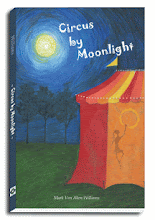The work of Teodor Axentowicz, as well as other Eastern European Symbolist artists, were ignored, presumably because virtually all their paintings were behind the Iron Curtain and thus impossible to see. It appears they had an approach to Symbolism all their own, heavily influenced by folklore.
"Under the burden of misery" (pastel on paper) stands out for me. Symbolist painters believed that art should reflect an emotion or idea rather than represent the natural world in the objective, quasi-scientific manner embodied by Realism and Impressionism. They felt that the symbolic value or meaning of a work of art stemmed from the recreation of emotional experiences in the viewer through color, line, and composition.
And the emotional reaction I get from this, brings “Signs and Symbols” by Vladimir Nabokov to mind. In particular the passage: “This, and much more, she accepted - for after all living did mean accepting the loss of one joy after another, not even joys in her case - mere possibilities of improvement. She thought of the endless waves of pain that for some reason or other she and her husband had to endure; of the invisible giants hurting her boy in some unimaginable fashion; of the incalculable amount of tenderness contained in the world; of the fate of this tenderness, which is either crushed, or wasted, or transformed into madness; of neglected children humming to themselves in unswept corners; of beautiful weeds that cannot hide from the farmer and helplessly have to watch the shadow of his simian stoop leave mangled flowers in its wake, as the monstrous darkness approaches.”








No comments:
Post a Comment